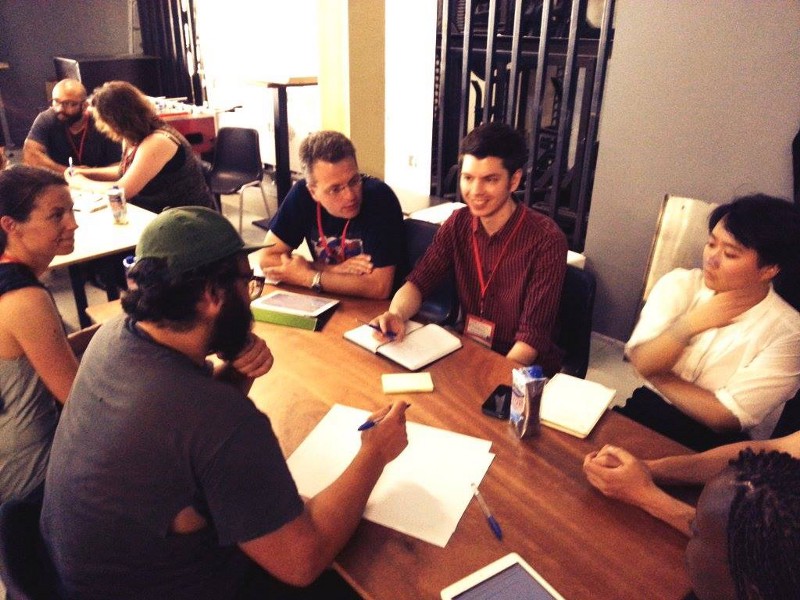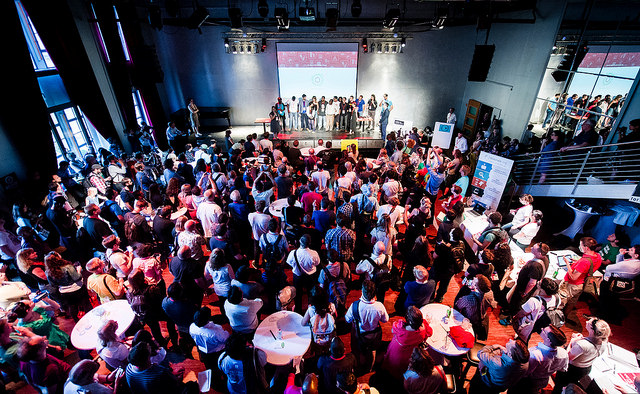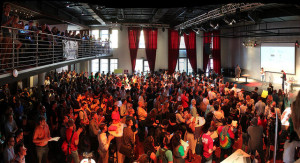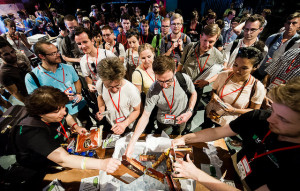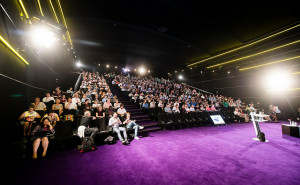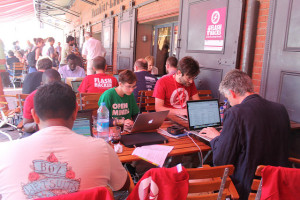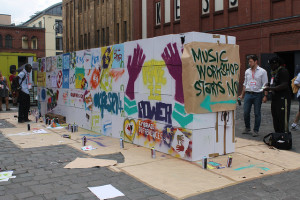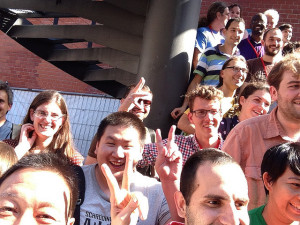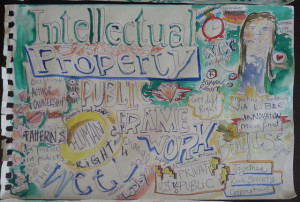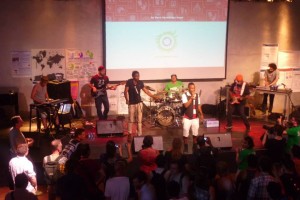This blog post is written by Lily Bui, M.S. Candidate in Comparative Media Studies at the Massachusetts Institute of Technology, and is cross-posted from her personal blog.
This year, I had the privilege of presenting at the Open Knowledge Festival in Berlin, Germany, an international meeting of the minds that brings together advocates for open science, data, government, and societies. While still not completely recovered from jetlag, I wanted to make sure I wrote this down before it all disappeared into the ether! (Though, most of it is conveniently logged in the session's Etherpad.)
My Thursday session focused on sensor journalism — using sensors to generate data that could be used to support journalistic inquiry. Long story short, it is clear that for many common issues that journalists pay attention to (both local and global), there is a sensor that could potentially help generate and collect data.
Any emergent field deserves its share of constructive criticism to shape it and to keep it balanced as it evolves. So, in our workshop, we ran a handful of thought experiments that stimulated some critical thinking about the sensor journalism space.
Needless to say, it was incredibly inspiring to see people from so many different countries thinking collaboratively about both local and global problems that sensor tools + data might help solve. They held constructive debates and discussions, asked challenging questions, and in the end helped me gain a better understanding of what still needs to be done for the field.
In the course of merely one hour, a group of people who were initially unaware of sensor journalism transformed into one that was able to identify various world problems that sensor data could help investigate, as well as suggest approaches to doing so. Now, if that's not inspiring, I don’t know what is.
[The feedback I received from this conference also warranted the start of an e-mail group and official hashtag for #SensorJourno to connect those wanting to stay in the conversation. Please join in if it suits your interests!]
Format
There were four groups total, and each group was given a scenario involving sensors + storytelling for which they needed to find a solution and define a working strategy. One group in particular (Group D) was given the sole purpose of playing devil's advocate — to think about the risks that come with more experimentation with sensor-based reporting. You’ll find the scenarios below.
GROUP A:
Your city, Dendropolis, was once known for its abundant and lush forest. Over time, a company called TIMBER, INC. began to cut down the trees for paper production, construction materials, etc. Now, there is very little forest left. Recently, a law was passed to restrict deforestation in Zone X. However, an anonymous source leaves you a tip that TIMBER, INC. is secretly still cutting down trees in Zone X. So far, there is no way to prove this. How could you use sensors to monitor this kind of activity? What kind of sensors are they? How would you collect the data? How would you use the data to tell a story? Would the story be a video, podcast, newspaper article, blog post, phone app, game, etc.?
This group thought of creating a visible border around the protected area/trees, so if the border was breached, then an alert could be sent off to the correct authorities to act upon it. Another idea was to place noise sensors in the area so that if the sound of a chainsaw was detected, alerts would be sent to the proper authorities or anyone else who signed up to receive them.
[Incidentally, this strategy actually resembles that of the current project called Rainforest Connection.]
GROUP B:
You are part of a research group that has designed an open source sensor which vibrates a few hours before earthquakes. This technology could possibly work as an early warning system for people who live in areas that are at risk for earthquakes. However, the technology is useless unless the information it provides reaches people who need it. Design a plan for action that includes media outreach. How will you spread the word and make this sensor available to as many people who need it as possible? How will you teach people how to use it? How would you use the data to tell a story? Would the story be a video, podcast, newspaper article, blog post, phone app, game, etc.?
For the sensor itself, the group came up with a list of questions to start thinking about their deployment strategy:
– How do we get it to potential earthquake zones?
– How do we get information/alerts from teh sensor to the local people?
– What kind of information?
Then for installing the sensor in earthquake zones, the group decided that the best way forward might be to build and maintain relationships with local communities, NGOs with extensive distribution networks, fire departments/emergency first responders, and local news outlets. The sensors would be installed in public buildings in identified earthquake zones.
In order to generate feedback to the community if an earthquake is detected by the sensors, the group thought of using relationships with local radio or TV as well as a broadcast SMS alert to spread the word in case of emergency. They even thought of tying the alerts to Ushahidi, an open source crisis alert system, to collect data from the ground and broadcast it to people.
GROUP C:
Identify an issue that you can help track using smart phone sensors. What is the best way to report the data you collect — an app, game, etc.? After the data is collected, how can you convey it in a way that will make sense to people that the issue affects?
The phone sensors that this group identified were as follows: GPS, microphone, accelerometer, gyroscope, battery/ambient temperature, barometer, bluetooth, light. (There are actually many more.)
Inspired by a group member who was visiting Berlin from the Sahara, where sandstorms can be prominent, this group designed an app meant for parents who were concerned about air quality outside, especially while their children were playing outdoors. With this app, parents can submit a photo of air quality/conditions to an app, which will be aggregated in an open, public database. The data would be visualized in a way that would show where air quality/pollution was the worst so that parents could make better decisions about where to take their kids for recreation.
GROUP D:
Your role is to play devil's advocate. While sensor journalism project emerge, what possible risks need to be considered? What problems can you anticipate might arise from more experimentation?
– Limited accessibility & representativeness. Mostly who can afford the sensors will acquire them, which excludes many demographic groups.
– Transparency/privacy. People may not be aware of what data they are giving away.
– Quality of the collected data. Problems with calibration of sensor tools, improperly collected data, working with unreliable data.
– Generalization. Analysis of data from local samples cannot be generalized to make greater statements about the wider issue (e.g. data from monitoring the water quality of one private well does not reflect the water quality of an entire state, region, country, etc.).
– Lack of clarity as to who can start a sensor journalism initiative — journalists, scientists, both?
– Bias. Journalists can shift media attention toward specific issues tha thave reached a critical mass, while ignoring other issues that could require attention.
